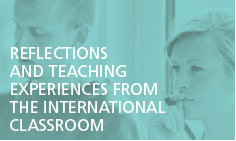Mastering cultural diversity in the classroom
Teaching and learning in the international classroom comes with clear advantages – and also with its challenges. As universities are becoming more international and comprising of a steadily more culturally diverse student and staff population, new university pedagogy is needed.
Experiences from the international classroom
Realising the didactic challenges, Laura Pérez Skardhamar and Joyce Kling have explored the growing internationalisation of education at UCPH. Their work has resulted in a collection of narratives from all of UCPH’s faculties, each of which illustrates aspects of the international classroom from a practitioner’s perspective.
The narratives tell of the special considerations that are necessary when teaching a mix of local and international students. For example, some international students find it difficult to comprehend the formal requirements and expectations. Others grapple with the informal manner of discussion in the classroom.
Karen Lauterbach, Associate Professor at the Centre for African Studies describes it like this: “The diversity that characterises the international classroom facilitates engaged discussions in class precisely because of the variety of students’ experiences, knowledge, and social and cultural backgrounds”.But mostly, the narratives focus on the potential for expanding the learning space and how to benefit from the increasingly multicultural student population.
The IntlUni network
Fortunately, UCPH is not alone in addressing these challenges. In 2013, we teamed up with 37 other European universities in the IntlUni project. This past September, the project concluded with a publication outlining guiding principles for teaching and learning as well as practical recommendations for decision makers.
Read more about Internationalisation and Language Skills at UCPH or contact Joyce Kling for further information.
Joyce Kling
 Joyce is postdoc in English at the Centre for Internationalisation and Parallel Language Use at UCPH.
Joyce is postdoc in English at the Centre for Internationalisation and Parallel Language Use at UCPH.

